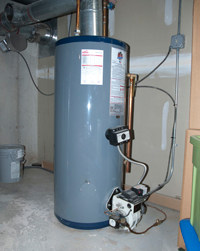Professional Advice for Caring for Your Home's Hot Water System
Professional Advice for Caring for Your Home's Hot Water System
Blog Article
The publisher is making several great annotation regarding Tips on Maintaining a Water Heater overall in this article beneath.

Warm water is crucial for day-to-day convenience, whether it's for a revitalizing shower or washing recipes. To ensure your warm water system runs efficiently and lasts much longer, routine maintenance is key. This short article gives useful pointers and insights on just how to maintain your home's hot water system to avoid interruptions and pricey fixings.
Intro
Keeping your home's hot water system might appear challenging, but with a couple of easy actions, you can ensure it operates smoothly for years to come. This guide covers whatever from understanding your warm water system to do it yourself upkeep suggestions and understanding when to employ specialist aid.
Importance of Maintaining Your Hot Water System
Regular maintenance not just expands the life-span of your hot water system but additionally ensures it operates successfully. Ignoring upkeep can lead to lowered efficiency, greater energy costs, and also early failing of the system.
Indicators Your Hot Water System Needs Upkeep
Knowing when your hot water system requires focus can avoid major concerns. Keep an eye out for signs such as inconsistent water temperature, weird sounds from the heater, or corroded water.
Comprehending Your Warm Water System
Before diving into upkeep jobs, it's helpful to comprehend the basic elements of your hot water system. Usually, this includes the hot water heater itself, pipes, anode poles, and temperature level controls.
Monthly Upkeep Tasks
Normal regular monthly checks can aid capture minor concerns before they rise.
Flushing the Hot Water Heater
Purging your hot water heater eliminates sediment buildup, enhancing performance and prolonging its life.
Checking and Replacing Anode Rods
Anode rods protect against rust inside the tank. Examining and replacing them when worn is essential.
Examining and Readjusting Temperature Level Settings
Changing the temperature settings ensures ideal performance and security.
Do It Yourself Tips for Maintenance
You can carry out numerous upkeep tasks on your own to keep your warm water system in leading condition.
Looking for Leaks
Frequently evaluate pipelines and connections for leaks, as these can cause water damage and higher costs.
Evaluating Stress Relief Valves
Checking the stress relief valve ensures it operates properly and avoids excessive pressure build-up.
Insulating Pipelines
Insulating hot water pipelines lowers warm loss and can conserve energy.
When to Call a Specialist
While do it yourself maintenance is useful, some concerns call for professional knowledge.
Complex Problems Needing Specialist Assistance
Examples consist of significant leaks, electrical issues, or if your water heater is consistently underperforming.
Regular Specialist Maintenance Benefits
Expert upkeep can consist of complete assessments, tune-ups, and making certain compliance with security standards.
Final thought
Normal maintenance of your home's hot water system is crucial for efficiency, durability, and price financial savings. By complying with these ideas and recognizing when to seek professional aid, you can ensure a trustworthy supply of warm water without unexpected disruptions.
Water Heater Maintenance Tips
Test the TPR Valve
Shut off the power and the cold-water supply valve. Place a bucket under the pipe connected to the temperature-pressure-release (TPR) valve on the top or side of the tank. (This valve opens if the tank pressure gets too high.) Lift the valve’s tab to let some water out, then let go. If water keeps flowing, drain the tank partway, unscrew the old valve with a pipe wrench, and install a new one. Check the Anode Rod
Put a hose to the tank’s drain cock and let out a few gallons of water. Now fit a 1 1/16-inch socket onto the rod’s hex head on top of the heater (or under its top plate) and unscrew the rod. If it’s less than ½ inch thick or coated with calcium, buy a new one, wrap its threads with Teflon tape, put it back in the tank, and tighten securely. Use this segmented rod if headroom above the tank is limited. Drain the Tank and Wash Out Sediment
Drain the remaining water in the tank into the bucket, then stir up the sediment on the tank’s bottom by briefly opening the cold-water supply valve. Drain and repeat until clean water comes out of the hose. Close the drain cock, refill the tank, and turn its power back on. Adjust the Temperature
Find the temperature dial on the side of the tank and unscrew its cover. Adjust the dial to 120 degrees using a flathead screwdriver. For every 10 degrees the temperature is lowered, you can expect to save up to 5 percent in energy costs. Turn the water heater off or the thermostat down to its lowest setting if you plan to be away from home for more than three days. Insulate the Pipes
Buy some self-sticking 3/8-inch-thick foam pipe insulation that matches the pipes’ diameter. Slide the foam over the hot-and cold-water pipes as far as you can reach. Insulating the cold-water pipe prevents condensation in summer. Peel the tape and squeeze the insulation closed. If the pipe is 6 inches or less from the flue, cover it with 1-inch-thick unfaced fiberglass pipe wrap. https://www.thisoldhouse.com/plumbing/21016402/how-to-maintain-a-water-heater

I'm just very serious about Tips on Maintaining a Water Heater and I really hope you enjoyed my piece. Those who enjoyed reading our page plz don't forget to pass it around. Thanks a lot for going through it.
Call Today Report this page